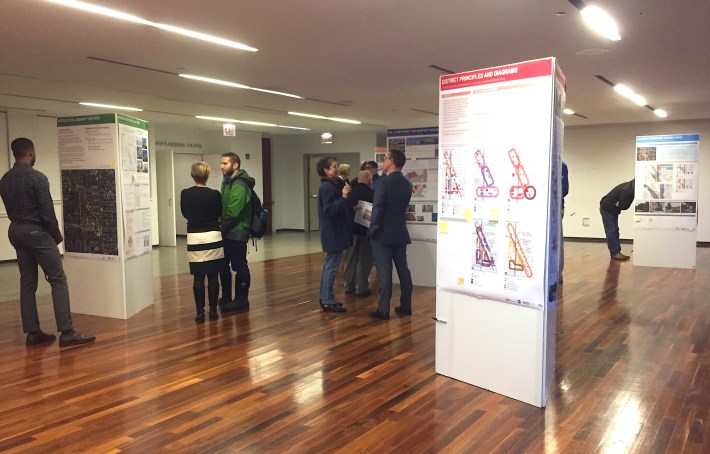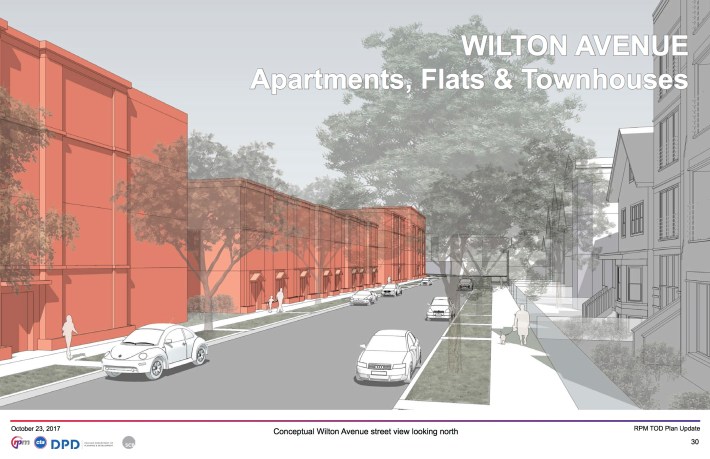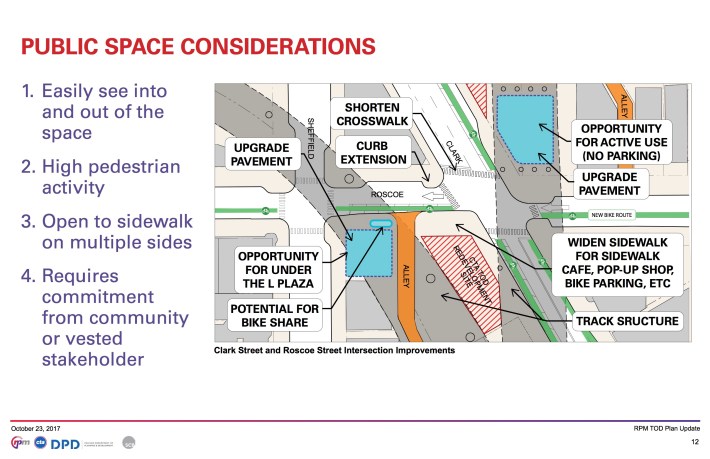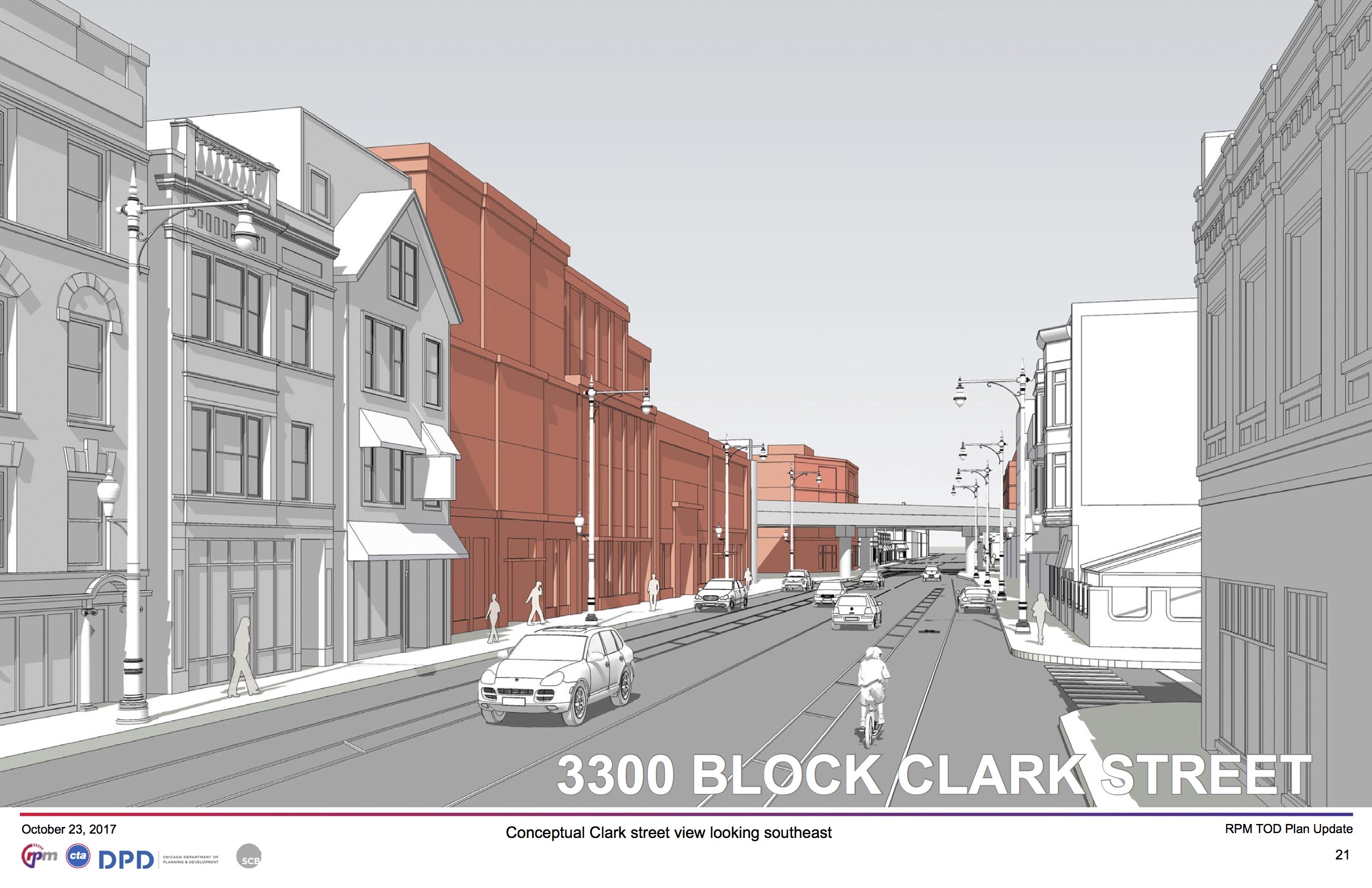On Monday night the CTA hosted a community meeting to introduce Lakeview residents to the agency’s redevelopment plan for the area around the future Belmont Flyover. More than three dozen residents showed up for the hearing at the Center on Halsted to discuss development opportunities following the project’s completion. View the meeting presentation here (PDF).
Phase I of the CTA’s Red-Purple Modernization project includes the flyover (officially called the Red-Purple Bypass), an elevated track to carry northbound Brown Line trains over the Red and Purple Line tracks. This will eliminate the need for Red and Purple trains to wait for Brown trains to cross, and the CTA says the change will allow them to run up to 15 more trains per hour between Fullerton and Belmont. The proposed structure previously faced fierce opposition from some residents, largely due to the need for the transit agency to demolish some 16 buildings and acquire 21 buildings on or near Clark Street north of the station.

In partnership with the Chicago Department of Planning and Development and a team of consultants, the CTA wrote a transit-oriented development plan to guide the redevelopment of sites made vacant during the construction of the flyover. This includes recommendations on building density and design. In particular, the plan focuses on taking advantage of the sites' transit-oriented development potential.
This meeting represented a step by the CTA to show community members that it has not only listened to their concerns about the impact of demolishing properties for construction purposes, but also to their concerns about redevelopment potential and the quality of those developments. As reported previously on Streetsblog, many of these residents have accepted the inevitability of the project. Since then, they have turned their attention to minimizing the negative impacts of the flyover and making sure that high-quality development follows the completion of the project.

Although the eventual redevelopment of these sites will be left up to market forces, CTA spokeswoman Irene Ferradaz said the agency will ultimately be responsible for putting the properties back on the market and that the agency would use the frameworks laid out in the TOD redevelopment plan to identify buyers appropriate for and responsive to the needs of the community.
While some residents commented that they were opposed to the development of TODs, a number expressed concern that too much parking was being proposed. Most of the massing diagrams (which show the general size and shape of a building) presented by the city depicted buildings no taller than six stories. Many residents said they felt that this is an appropriate maximum height for the area, although some expressed support for taller buildings with more units. Alderman Tom Tunney also outlined plans for a number of improvements to sidewalks, as well as new east-west neighborhood greenways on Roscoe and School/Aldine, which the audience applauded.

Unfortunately, city officials at the meeting didn't discuss any other potential improvements to pedestrian, bike, and bus infrastructure in the area, such as improving service on the Belmont bus. The CTA’s director of strategic planning and policy Leah Mooney acknowledged that there is a “conversation that needs to happen on a broader scale around complete street,” but added that the CTA is “working with [the Chicago Department of Transportation] on all these pieces.”
The TOD plan successfully lays the groundwork for redevelopment around the Belmont Flyover. Hopefully empty lots in the heart of Lakeview will not sit empty for long considering the neighborhood’s tight housing market. (It's worth noting that, about a decade after buildings along the west side of Wilton north of Belmont were razed as part of the station reconstruction, that land remains a gravel parking lot.) Still, discussions about the quality of local streets and the pedestrian and bike experience need to begin, because the Belmont Flyover will impact more than just ‘L’ riders.






